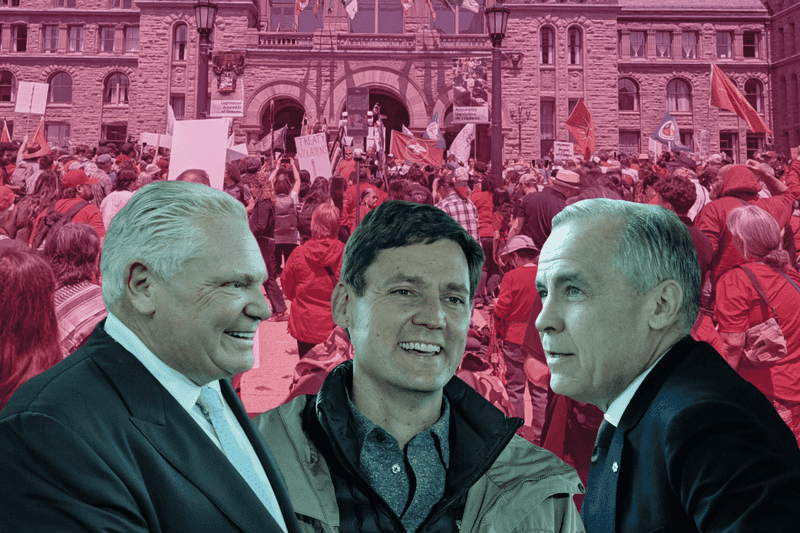
After more than ten years of lax monetary policy that guided as much money into markets as possible, increased liquidity, and stimulated inflation, a shift is underway: now, money is actively being withdrawn from markets to fight inflation.
Advocates of this shift ignore that other instruments of economic policy, such as comprehensive price caps, taxes on corporate profits, and redistributive measures are far better suited to fighting inflation than the current focus on monetary policy.
In light of this, it is hardly surprising that outside of the business press, the impact of monetary policy decisions in the Global North on the states of the Global South are rarely even mentioned, let alone debated. When currencies of the Global North and especially the US Dollar become stronger (the stated goal of the current policy shift), states in the Global South come under pressure, as their currencies become comparatively less valuable. As a result, many of these states lose the ability to service large outstanding foreign debts and thus find themselves forced to take on new debts under ever worsening conditions. All the while, they are pressured by international institutions to implement austerity measures – as long as they aren’t currently ruled by neoliberal governments happy to cut public goods and services on their own.
Strong Currency at the Expense of the Poor
While history never repeats itself perfectly, a look to the past paints the current monetary policy shift in a troubling light. When central banks in the Global North tightened the monetary reigns in the 1970s in response to low growth and high inflation, Latin America (along with other parts of the Global South) was hit by an unprecedented sovereign debt crisis that plunged the continent into a nearly decade-long economic crisis. And as is so often the case, wage workers, indigenous people and the poor were hit the hardest.
In many ways, the political-economic conjuncture of 1979 is similar to our present. Although Covid-19 did not exist, and most imperial wars of aggression were still waged by the US, the situation in the Global North was just as much a product of low growth and high inflation as it is today. These factors stemmed, among other things, from the collapse of the Bretton Woods system.
Though the Bretton Woods Agreement foresaw the establishment of the International Monetary Fund (IMF) and the World Bank, two institutions that exacerbate global inequality, it also created a system of fixed exchange rates. Based on the gold standard, this system played a major role in stabilizing the global economy following World War II. When Richard Nixon abandoned Bretton Woods in 1971, partly to combat recession in the Global North and financial speculation, exchange rates became increasingly unstable, as mountains of yield-hungry capital were unleashed on the Global South.
At first, this produced a fairly comfortable situation for many Latin American states. Although exchange rate fluctuations caused some problems, interest rates were generally favorable because of the glut of capital from the Global North – seemingly decent parameters for states whose governments are working to industrialize. After 1975 in particular, many corporations, banks, and governments took out loans offered by Global North banks on conditions that appeared solid. But during this period of relative stability in Latin America, the economic climate in the US grew more complicated.
In response to the oil crisis, growing pressure on the US Dollar from currency speculators, and the resulting slowdown in economic growth, US economic technocrats were forced to loosen monetary policy to prevent low growth rates, as the stability of capitalist economies depends on high growth. At the time, so the thinking went, lowering key interest rates would give firms easier access credit, which would in turn make the economy more productive, increase exports, and ultimately raise the value of the US Dollar relative to other currencies. However, the intended effect was not achieved: economic growth remained lacking, and inflation kept rising anyway.
In 1979, Jimmy Carter appointed Paul Volcker as Chairman of the Federal Reserve. As soon as he took office, Volcker instituted a drastic and unprecedented key interest rate hike. The consequences were predictable: the US economy collapsed, and millions of people were forced into unemployment. As we now know, this could have been avoided.
Yet the consequences were even graver in Latin America. As the relative value of the US Dollar shot up in response to the rapid key interest rate hike, the costs of tending to debts exploded for countries such as Brazil. Not only were their currencies suddenly worth less in comparison, the interest rates on their debts skyrocketed, as most of their loans had been borrowed on the condition of flexible interest rates linked directly to monetary policy in the Global North.
In theory, states that could no longer afford to service their debts had a variety of options. Indeed, in financial crises before 1981, it was common for them simply to not repay loans when they couldn’t. This was exactly the course of action taken by the Mexican government in 1981. Yet as many now believed the financial markets spelled risk for their investment returns, borrowing conditions for Latin American states deteriorated considerably. After all, this crisis was different: the amount of loans extended to Latin America was so great that a series of defaults could have meant the collapse of the US banking system.
For this reason, the US banking sector and government put massive pressure on Latin American governments to repay their national debts – including by taking on new debts if necessary, either from major US banks on conditions that were economically miserable, or from the IMF on conditions that were politically miserable to boot. Though the emergency credit offered by the IMF for repaying debts seemed generous, it was in fact contingent on so-called structural adjustment programs.
Structural adjustment programs force states to open their financial markets to foreign capital, slash social spending, and sell off public assets to private firms and individuals. In the late 1970s and 1980s, many Latin American states spent multiple years trapped in situations where they had to implement them. The consequences for their populations were so severe that this period is now known as the lost decade. At the same time, Volcker’s policy also drove masses of working-class people in the US into unemployment and personal debt – the effects of which can still be felt today.
Old Strategy, New Resistance
Much about the current situation recalls the year 1979. Due to the shutdowns in response to the COVID pandemic, states around the world took on a considerable amount of debt to keep their economies up and running – just as many had already done following the 2007/08 financial crisis. In the ten largest Latin American economies (excluding Venezuela), the ratio of national debt to economic output has increased on average by 22.7 percent since 2007. For comparison, during the same time frame, this same figure in Germany rose by 3.7 percent.
In the last two years, the costs of national debts in Latin America have gone through the roof: Argentina is now paying 21.5 percent more interest on government bonds than Germany, whereas the rates faced by Ecuador and Venezuela respectively are as much as 46.8 and 89.4 percent higher. On average, the ten largest Latin American economies pay 25.5 percent greater interest than Germany – money that has to be obtained through new debts or spending cuts, or extracted from national economies through taxes.
At 8.3 percent in the US and 10 percent in the Eurozone, inflation is at similarly high levels to 1979. Moreover, just as was the case at the time of the Volcker Shock, economic growth in the US and EU is low, and federal banks in both are again tightening monetary policy. Today, among other things, this means raising key interest rates. In the last two years, the Federal Reserve and the ECB have increased their respective key interest rates by 3 percent and 2 percent.
Yet we don’t live in the same world as 40 years ago. Progressive forces in the Global South have sought and found ways to defend themselves against exploitation by the Global North. For example, many states have deliberately reduced their foreign currency debts. In Brazil, 3.3 percent of the total debt is now in foreign currency, compared to 22.5 percent in Mexico and 49.6 percent in Chile – significantly smaller figures than in 1979.
Many states have developed mechanisms for responding to fluctuating exchange rates. In Latin America, countries such as Columbia and Chile have compiled large reserves of foreign currencies, which they can sell to stabilize their own currencies in periods of economic turbulence. Central banks in Brazil, Mexico, Peru, Chile, and Columbia have kept their financial markets liquid with asset purchase programs. Financial sector regulations have become tougher throughout the continent with oversight power allocated to central banks. Brazil and Mexico now also have direct access to US Dollar liquidity from the Federal Reserve, which allows them to absorb exchange rate fluctuations.
Yet since the 2007 financial crisis, the financial markets of the Euro and the US Dollar have only been propped up by massive interventions from central banks. By buying government bonds and other assets, central banks have maintained the stability of both prices and the shadow banking system.
Since 2007, central bankers and economists have been developing new instruments for dealing with the effects of the financial crisis, the European debt crisis, and the COVID-19 pandemic. Little by little, these instruments have now become normalized. Most prominent among them are bond purchasing programs, where central banks buy up mostly bonds from governments but also from private firms in order to stabilize financing costs and stimulate inflation. This has happened to such an extent that the ECB’s assets are now worth as much as a third of the EU’s annual economic output. The situation in the US is similar. The point of these programs has been to give unregulated financial actors, or so-called shadow banks, access to short-term liquidity.
Today, scholars are warning that more than fifty states in the Global South are on the verge of defaulting on their debts. Meanwhile, inflation is rising not only in the Global North but also in Latin America. In response, central banks in the region are raising key interest rates, which is supposed to stabilize currency values by reducing borrowing and thus inflation. Although interest rate hikes often don’t achieve this stated goal, they do entail a number of side-effects – such as causing economies to shrink. In capitalism, this means increased unemployment, reduced state revenue, and cuts to public spending.
In spite of current economic insecurity and instability, the Federal Reserve and ECB are proceeding in an extremely risky manner by simultaneously reintroducing stabilization programs and raising key interest rates. Back in 2013, a simple announcement that Federal Reserve would reduce asset purchase programs was enough to send the costs of Latin American debt through the roof. What we are currently witnessing is a policy that not only repeats the mistakes of 1979, but combines them with those of 2013. What the exact consequences of this policy will be, and whether the toolkit of central bankers and economic policymakers in the Global South will be sufficient to deal with the expected shock, is anyone’s best guess.
International Crises Demand International Struggles
This real-world experiment in economic policy being pushed by central bankers and neoliberal economists has no historical precedent. What makes it so insidious is that little can be done about it in the short term, as the major central banks of the Global North now stand above any kind of parliamentary influence – the consequence of a successful campaign waged by libertarians since the 1970s to push “central bank independence” while selling central bank policy as a purely technocratic matter. Even if elected politicians were to recognize the risks of the central banks’ line, forcing a change would take time.
Since the formal end of colonialism, activists and politicians of the Global South such as Thomas Sankara have been struggling against the dependencies of the global financial system, conscious that the political enemy and cause of economic crises resides in the Global North. Today, this struggle is being carried on among others by Debt for Climate, a movement initiated by the Global South that blockaded a joint meeting of the IMF and World Bank in Washington, DC on October 14 and occupied Germany’s Ministry of Finance on October 17. Demanding debt cancellation for states in the Global South, this movement asserts that the payments demanded by the Global North are not legitimate but the legacy of a power disparity tracing back to the colonial era.
Yet though debt cancellation is important, it alone cannot end neocolonial economic relationships. This would require fundamentally rethinking monetary and economic policy while rejecting the economic status quo – which has proven both insufficient to tackling economic crises in the Global North and a catastrophe for the Global South with respect to both sovereign debt and trade relations. Ultimately, monetary policy must be seen not as a technical question, but a political one that determines how material resources are distributed.
Those seeking to reshape the international economic order face a difficult struggle. Colombia’s Prime Minister Gustavo Petro knows this. In a public address from October 19, he highlighted that US monetary policy is intentionally destroying the global economy while calling on Latin American states to develop a plan for responding to the actions of the US with unity and resolve. Such an undertaking is sure to have the support of progressive movements and political forces in Brazil, Bolivia, Chile, Mexico, and beyond. Let’s hope that the old slogan proves true and “the people united will never be defeated” – not even by the architecture of international financial markets.
Robin Jaspert studies economic history at Goethe University in Frankfurt am Main and works as a research assistant in International Relations and International Political Economy. In addition to his scholarship, he is involved in political education and movement activism.



